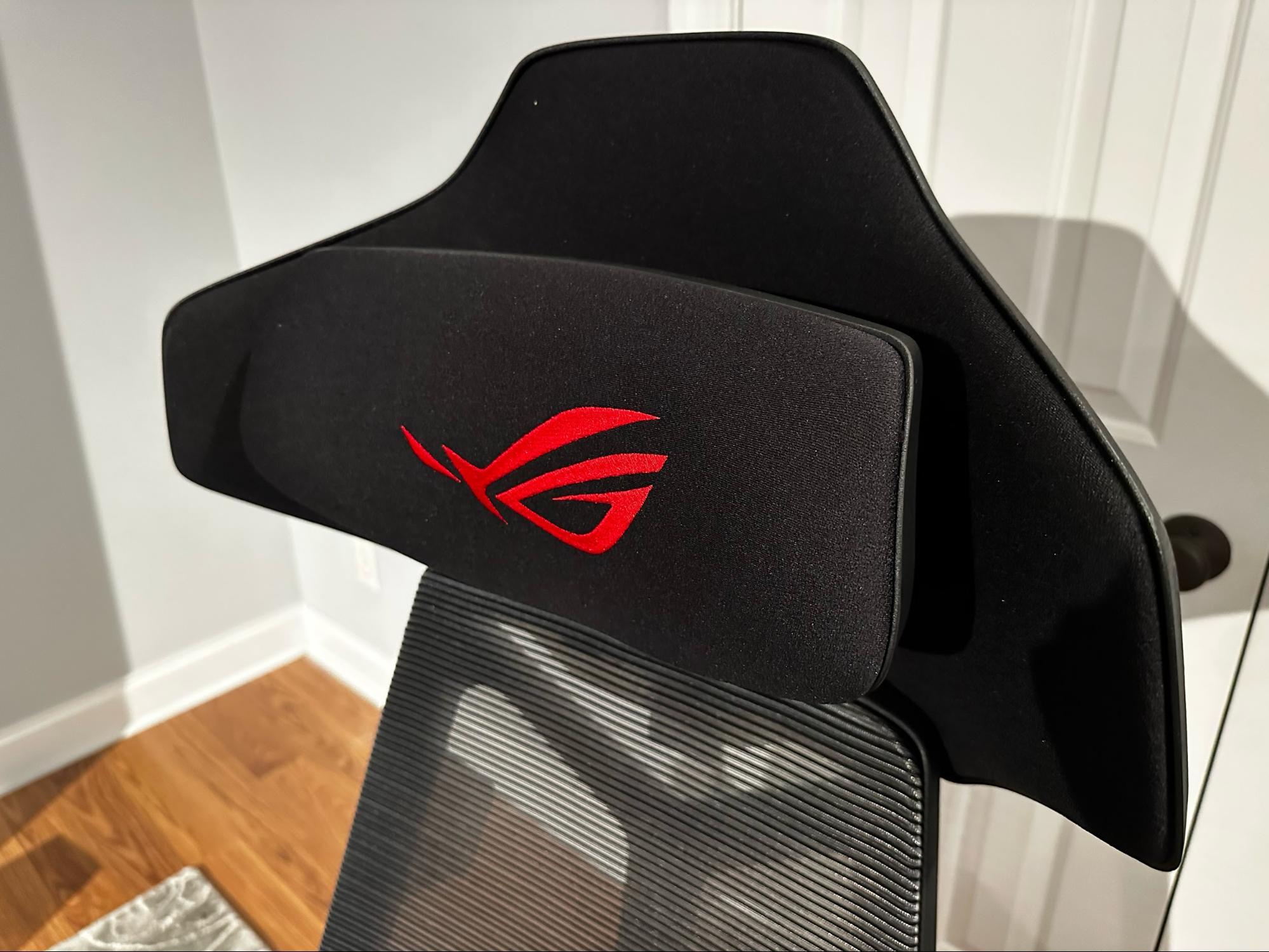Tom's Hardware Verdict
With a combination of high-quality materials, good looks, and configurability, the ASUS ROG Destrier is a great gaming chair. But some will be put off by its price.
Pros
- +
High quality materials used throughout
- +
Highly adjustable to dial in comfort
- +
Good looks
Cons
- -
High price
- -
Wobbly armrests
Why you can trust Tom's Hardware
The Asus Rog Destrier is the latest in the company's line of gaming chairs aimed at enthusiasts. Previous entries from Asus included the ROG Chariot Core and ROG Chariot RGB.
Although Asus doesn’t have a long established pedigree in gaming chairs, the Destrier is a valiant effort thanks to a combination of high-quality materials used and a high degree or configurability. With a price tag of $899, the Destrier doesn’t come cheap, but is that price of entry enough to keep it off our best gaming chair list? Read on to see how the Destrier stacks up and if should earn a spot in front of your desk and 4K gaming monitor.
Assembling the Asus ROG Destrier
My Asus ROG Destrier review sample arrived in a massive box weighing over 70 pounds. Inside the box, all the major components were either wrapped in plastic, foam, bubble wrap, or cardboard (or some combination) to ensure that all were well-protected during shipment. The various protective materials did their job, as everything arrived in factory new condition.
Asus includes a large, double-sided Assembly/Function guide with the Destrier, which makes putting the chair together a relatively simple process. I wasn’t rushing by any means, but I put the chair together in about 25 minutes, following the step-by-step instructions with detailed drawings and text to guide me along.
I only had one misstep in Step 5, which involved installing the armrests with six screws and six washers. I forgot to install the washers because the instructions didn’t explicitly mention them. But to Asus’ credit, the accompanying image did show the washers attached. I didn’t realize my mistake until I tightened all the bolts and moved to the next step. However, it didn’t take much to undo my blunder and finish the build process.
My only other issue during the build came when attaching the acoustic panel. It required a significant amount of force to clamp it to the seat base, and I feared I would rip the fabric. However, after some careful massaging, the acoustic panel snapped into place, and I secured it with the final two screws.
It’s also nice that Asus provides a bag of spare parts (one of each type screw and washer) just in case you lose one.
Get Tom's Hardware's best news and in-depth reviews, straight to your inbox.
Specs
| Upholstery | High-tension mesh, PU foam |
| Total Height (with base) | 50.78 - 54.25 inches / 129 - 138 cm |
| Floor to Seat Height | 18.5 - 21.5 inches / 47 - 55 cm |
| Armrest Adjustments | 3D |
| Recline | Backrest adjustability 90 - 135 degrees |
| Backrest Length (not including headrest) | 25 inches / 63 cm |
| Backrest Width (Shoulder Level) | 14 inches / 36 cm |
| Seating Area Width (total) | 22.44 inches / 57 cm |
| Seating Area Depth | 19.68 inches / 50 cm |
| Armrest Width | 4 inches / 10.16 cm |
| Armrest Depth | 10 inches / 25.4 cm |
| Armrest Height (from floor) | 28.75 - 34.37 inches / 73 cm - 87 cm |
| Castors | 2.95 inches - 7.5 cm PU |
| Max Recommended Weight | 330 lbs / 150 kg |
| Weight | 54.34 lbs / 24.65 kg |
| Warranty | 2 years |
| MSRP / Price at Time of Review | $899 |
| Release Date | Available Now |
Design and Construction
Although probably not to everyone’s tastes, I like the look of the Destrier. Asus says that it has the “futuristic aesthetic of a cyborg,” and that’s easily identifiable by its angular design. It’s a sleek chair with an aluminum frame and five-wheel base. The frame, wheel base, and attachment for the 3D armrests are finished in a shimmering grey paint. The rest of the hard pieces are finished in matte black plastic.
The tops of the armrests feature one-piece molded polyurethane foam padding. A high-tension mesh suspension system is used for the seat cushion and backrest. The headrest and acoustic panel are black plastic and covered in padded fabric. Asus breaks up the grey and black color scheme with a red ROG logo on the headrest and red/white stitching on the adjustment straps for the tilt/depth/height controls.
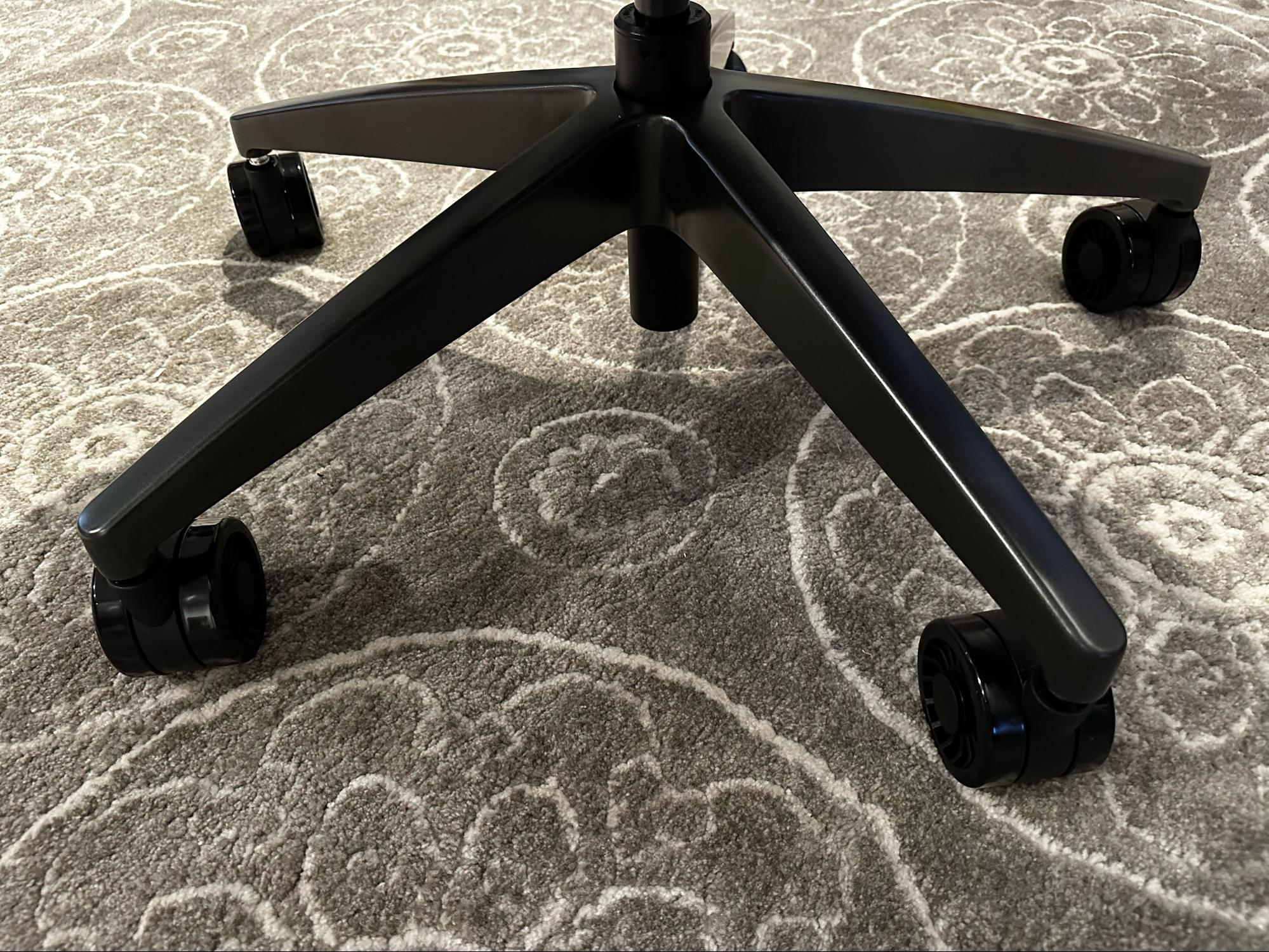
The chair weighs 54.34 pounds (24.65 kg) fully assembled and supports up to 330 pounds (150 kg). I am 5’10” and weigh around 165 pounds; the Destrier fits me well at maximum seat height.
Comfort and Adjustments
This Destrier is equipped with plenty of adjustments that you would expect from a chair in this price range. For example, the backrest is adjustable from 90 to 135 degrees, with four lockable steps within that range (90, 105, 120, and 135 degrees). There are also 3D armrests that can rotate 360 degrees and adjust in height (14cm of adjustment available).
In the highest setting, Asus says that the Destrier is suitable for mobile gaming, as your elbows are placed higher. The armrests can move fore and aft, stopping along five idents. However, that high degree of adjustability comes with a few downsides. First of all, the armrests don’t feel very stable, with the vertical posts wiggling around freely in their metal bases. There is also a lot of play in the height adjustment mechanism that allows the armrests to rotate 360 degrees.
However, the biggest offense with the armrests is how easily they move forward and aft. Sometimes, leaning forward with my elbows firmly resting on the armrests was enough to dislodge them and move to the next ident. This frequently happened with a clackety-clack sound and had me wishing there was a way to lock the horizontal position of the armrests.
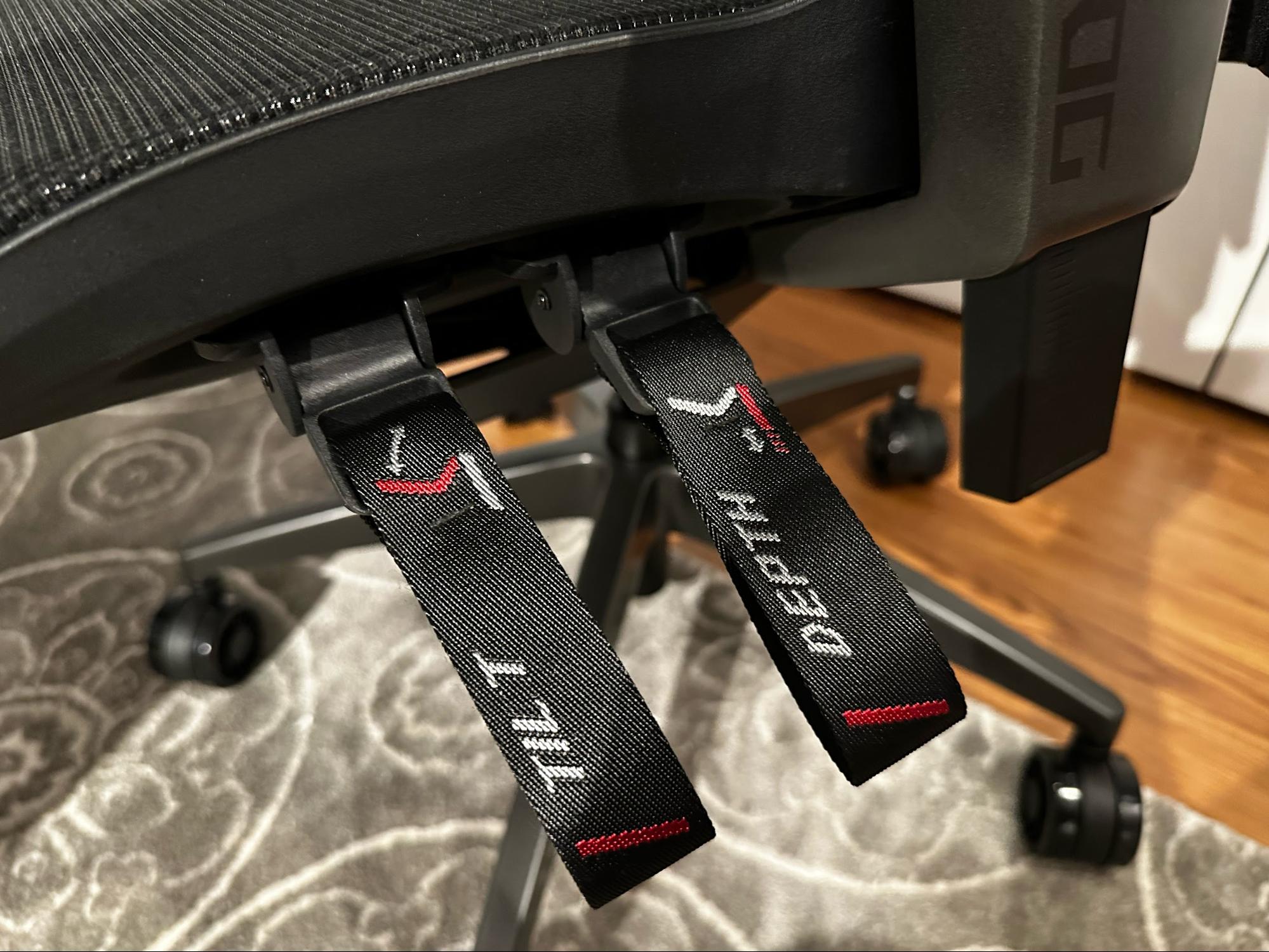

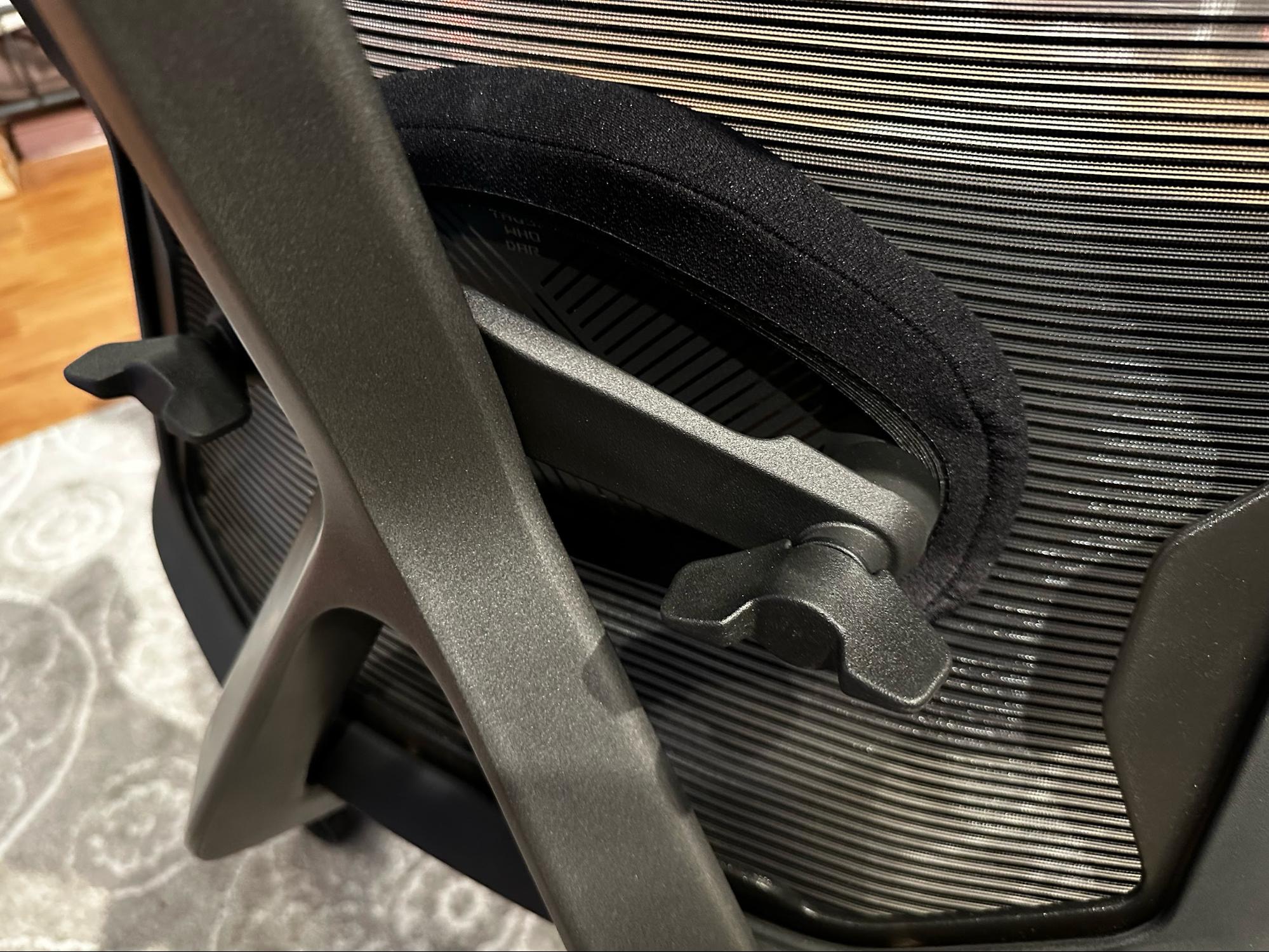
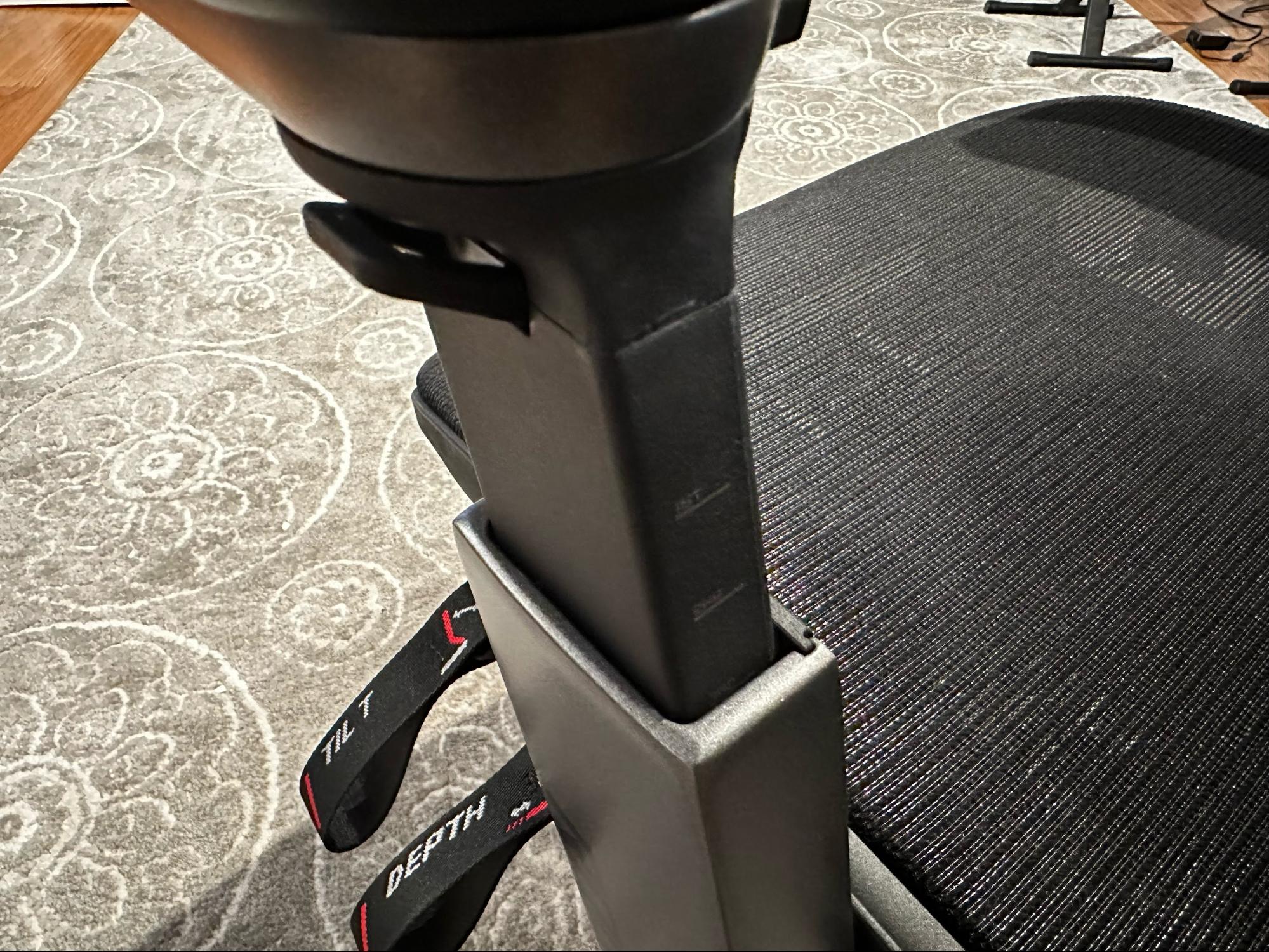

On the right side of the seat cushion sprouts a strap for adjusting the chair's height via its Class-4 gas strut. Pull the strap up, and you’re able to position the cushion higher or lower. There’s also a bar sticking out with a knob for adjusting seat tension. This controls how easy it is to recline the backrest, although there are no numbers to indicate the tension level. Instead, “+” and “-“ indicators show if you’re increasing or decreasing the tension.
On the left side of the seat cushion are two additional straps for depth and tilt adjustments. Lean back in the chair and pull the tilt strap up to lock it into one of four positions. To return the chair to its default 90-degree position, pull the strap down and lean all the way back, after which it will spring back into place. To adjust the seat cushion depth, pull up on the depth strap and move the cushion forward or back.
The seat has no padding, as it uses a comfortable fabric mesh suspension system. I’m used to moderately plush office chairs, so getting used to the firmer feel with the Destrier took some time. The seat is 22.44 inches wide and 19.68 inches deep (570mm x 500mm), with plenty of room for me to wiggle around. More importantly, there is sufficient room for me to sit with my legs crossed in the chair. While it’s not the most ergonomic seating position, I find it comfortable (at least in short spurts), and my Mini Schnauzer loves to curl up and sleep in my lap when I sit this way.
Asus includes adjustable lumbar support on the Destrier, which is controlled using two knobs. The soft fabric-covered lumbar support can be adjusted for height (7cm of movement) to align against your back properly. It can also move fore and aft (2cm) to decrease or increase pressure/support.
Similar customization is available for the headrest, which supports a depth range of up to 6cm and is adjustable for height up to 12cm.
Behind the headrest sits an optional acoustic panel, which is supposed to help block distracting sounds coming from the sides of your chair. While wearing noise-canceling headphones, I didn't notice much difference with the panel on or off, but your mileage may vary.
For my comfort, I left the seat base depth to its default position and the seat height to the maximum level. I also set the armrest height to the third setting and left the recline at 90 degrees. With these settings, I was able to sit in front of my desk during the workday and game a bit after hours without fatigue. I even tried Asus' suggestion to recline the seat and place the armrests in the highest position to game with a smartphone. To my surprise, it worked quite well ergonomically while playing Grand Theft Auto V on my phone using Xbox Cloud Gaming.
Bottom Line
The Asus ROG Destrier is a great chair, with plenty of available adjustments to fit your body. The materials used throughout the chair are high quality, with a mixture of plastic, polyurethane foam, mesh, padded cloth, and aluminum. I particularly liked the adjustable lumbar support to aid my aging back, and the extending headrest proved to be comfortable for long workdays.
On the other hand, the included acoustic panel seemed like it was there more for style than actually providing a noticeable difference in noise reduction. And I wish the armrests weren't so rattly and loose in their locked positions. But perhaps the biggest detraction is the price; at $899, the Destrier is hundreds of dollars more expensive than alternatives like the Razer Iskur and Herman Miller x Logitech G Vantum.
However, I can’t argue with the comfort of the Destrier; the chair pampered my butt and back. In addition, the chair just looks so damn cool without being garish. Picking a gaming chair is a personal decision, much more so than a more analytical purchase like the best graphics card for gaming or the best CPU for gaming. But if you can get past the price and some niggling issues, the Asus ROG Destrier would make an excellent addition to any gamer’s hardware arsenal.

Brandon Hill is a senior editor at Tom's Hardware. He has written about PC and Mac tech since the late 1990s with bylines at AnandTech, DailyTech, and Hot Hardware. When he is not consuming copious amounts of tech news, he can be found enjoying the NC mountains or the beach with his wife and two sons.
-
Friesiansam Hard to believe the acoustic panel is anything more than a pointless gimmick and, those armrests would not be acceptable on a chair at half the price.Reply -
ayashi Wobbly armrests is, as someone else mentioned, unacceptable in any professional gaming club or in my opinion, anywhere. They are damn annoying!Reply

